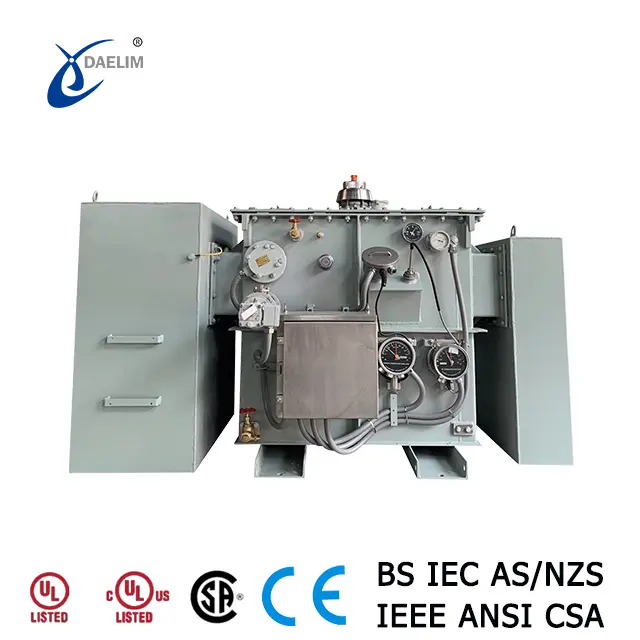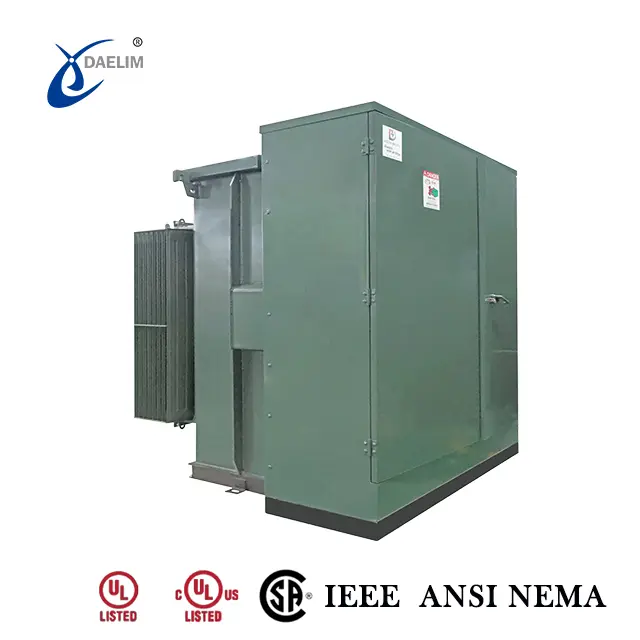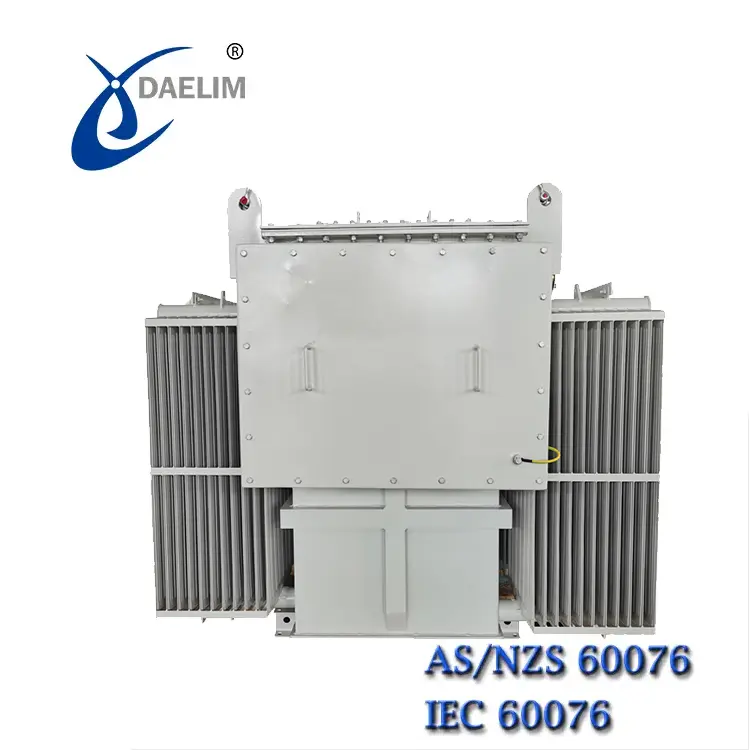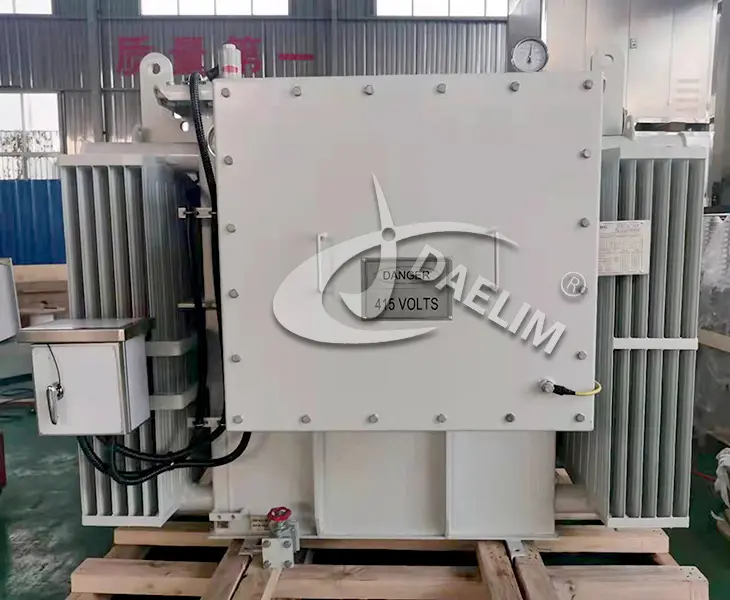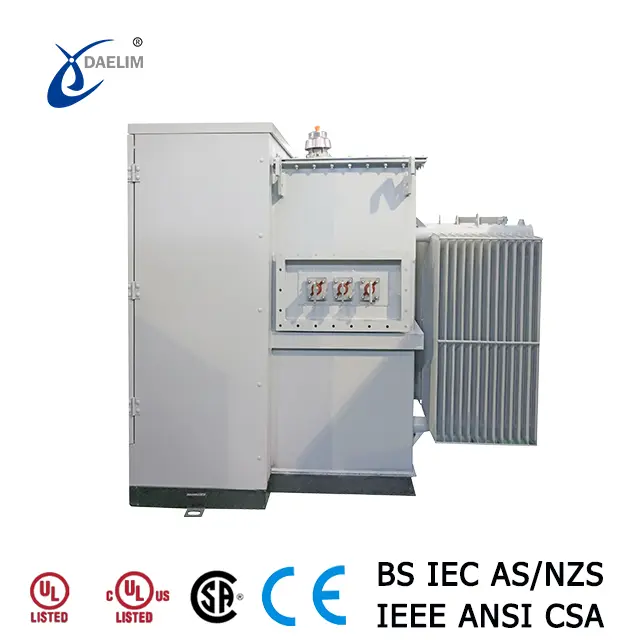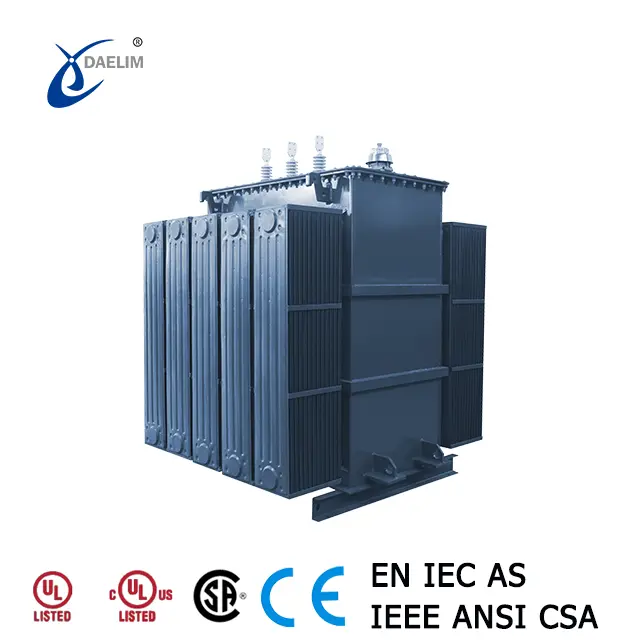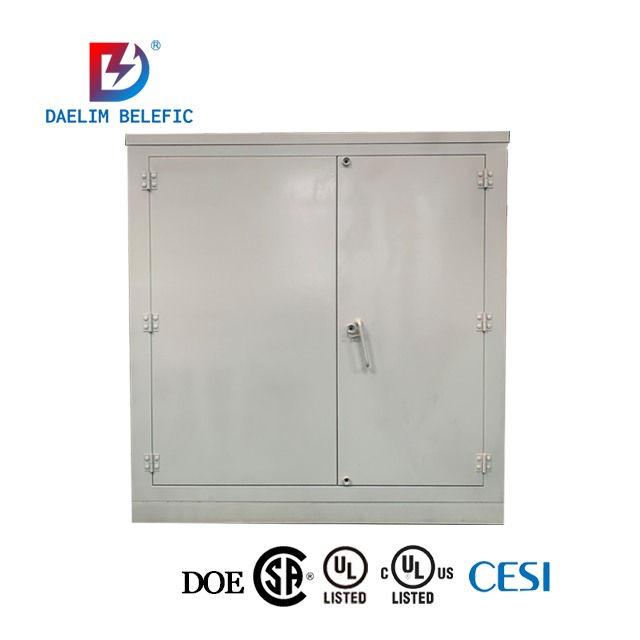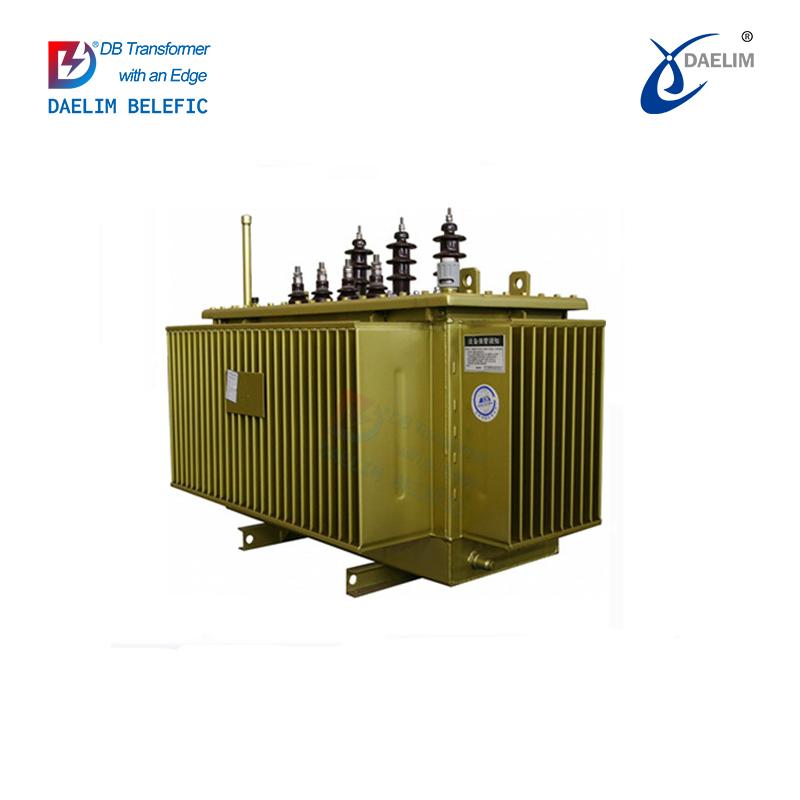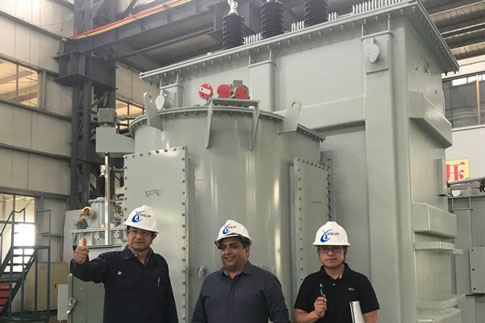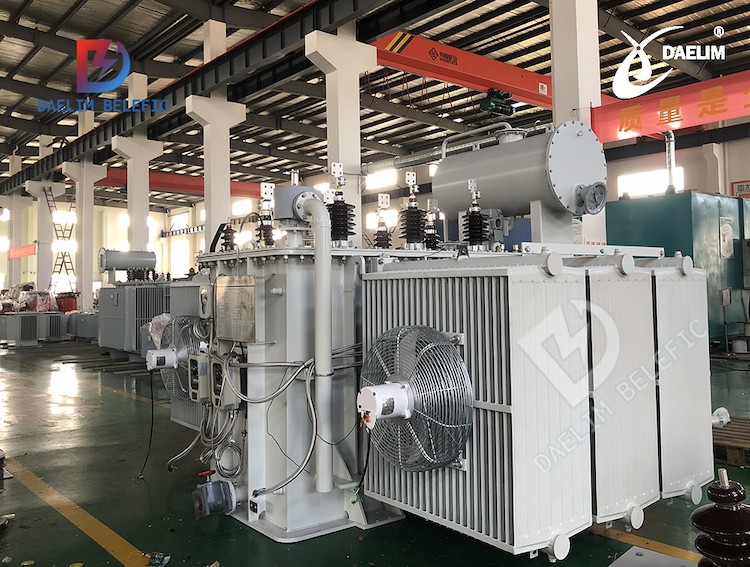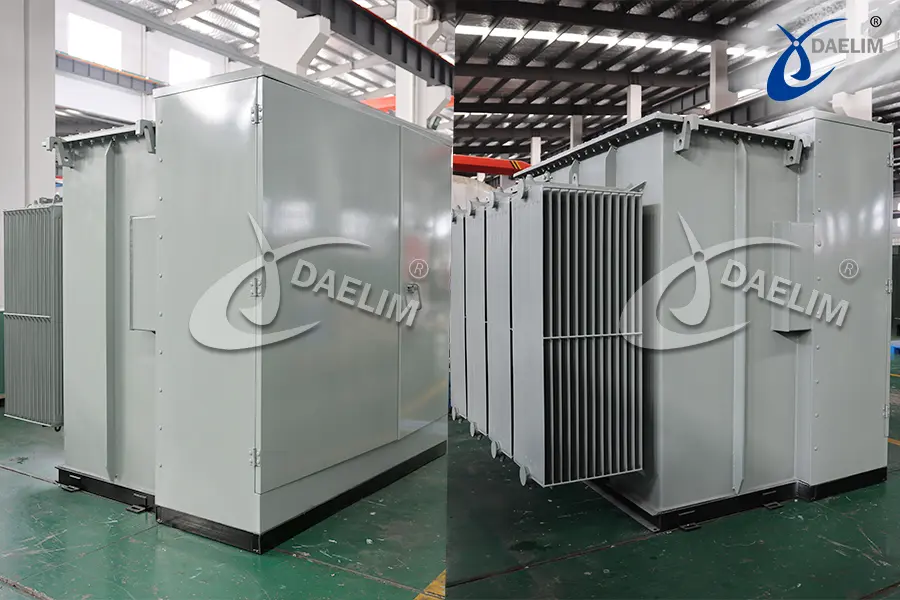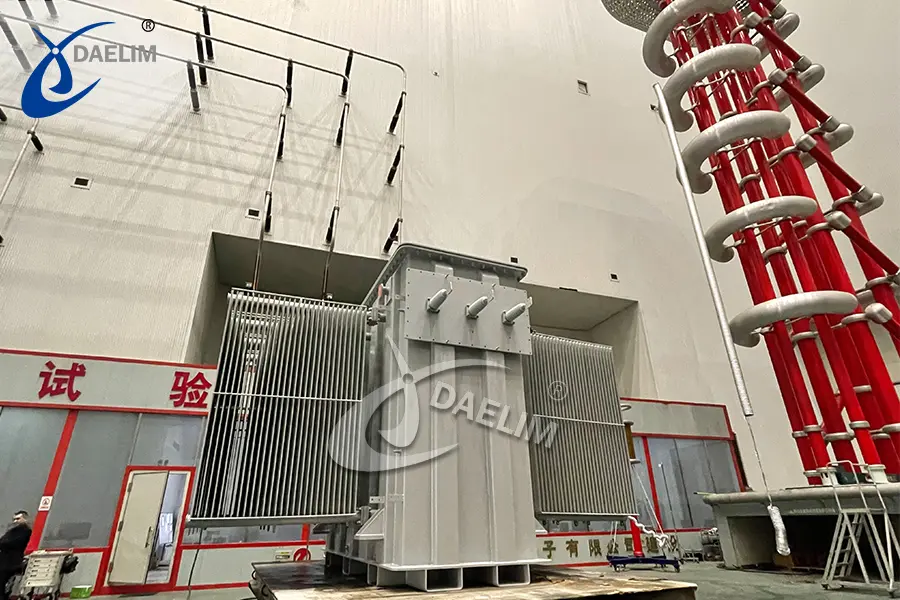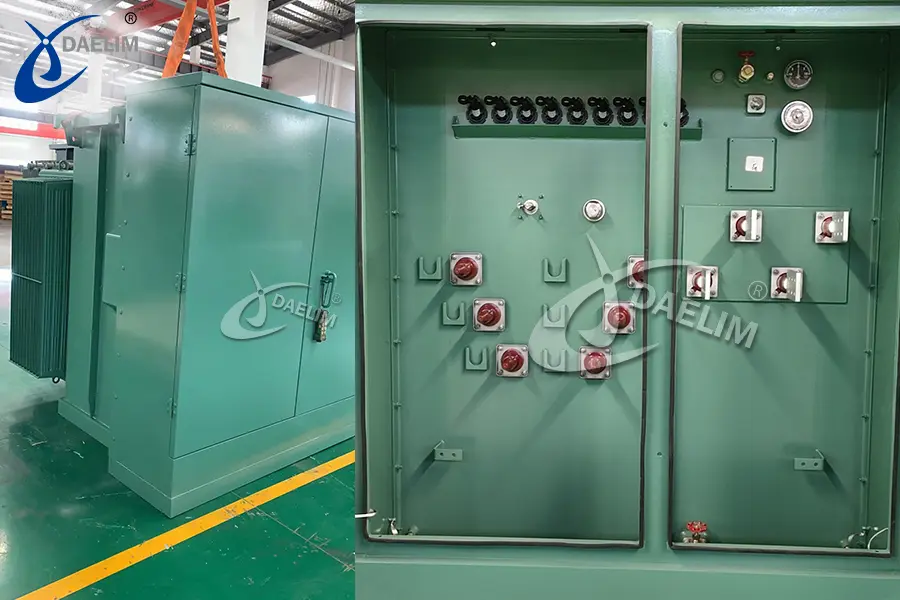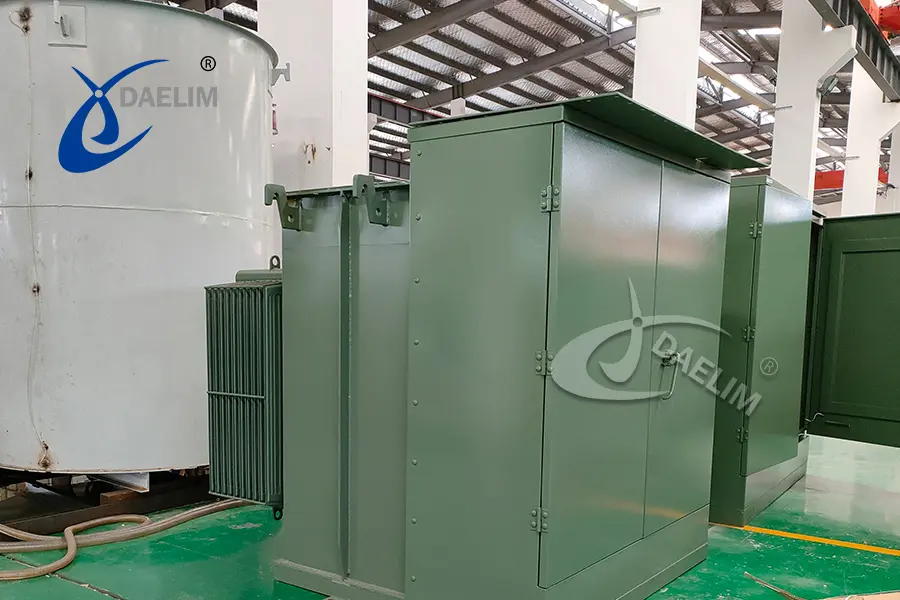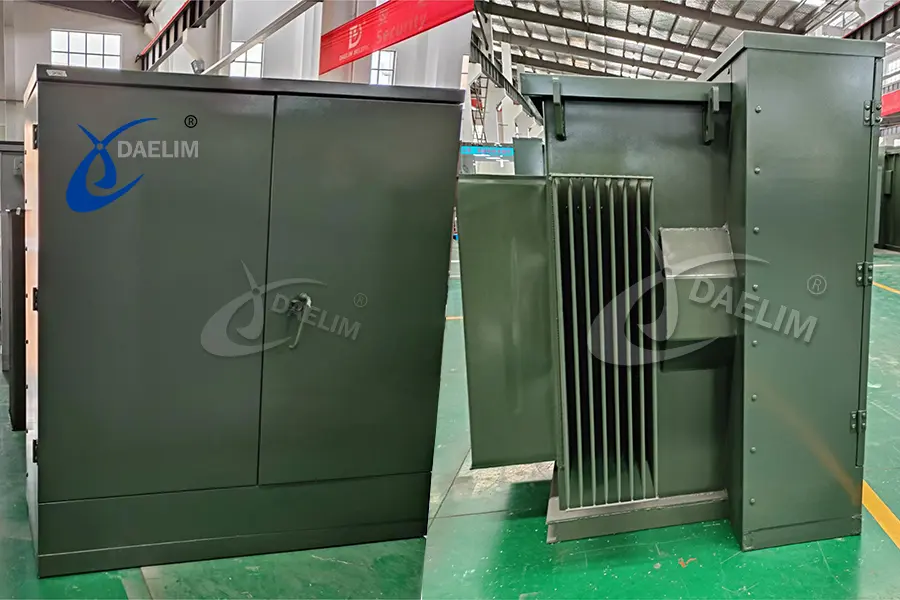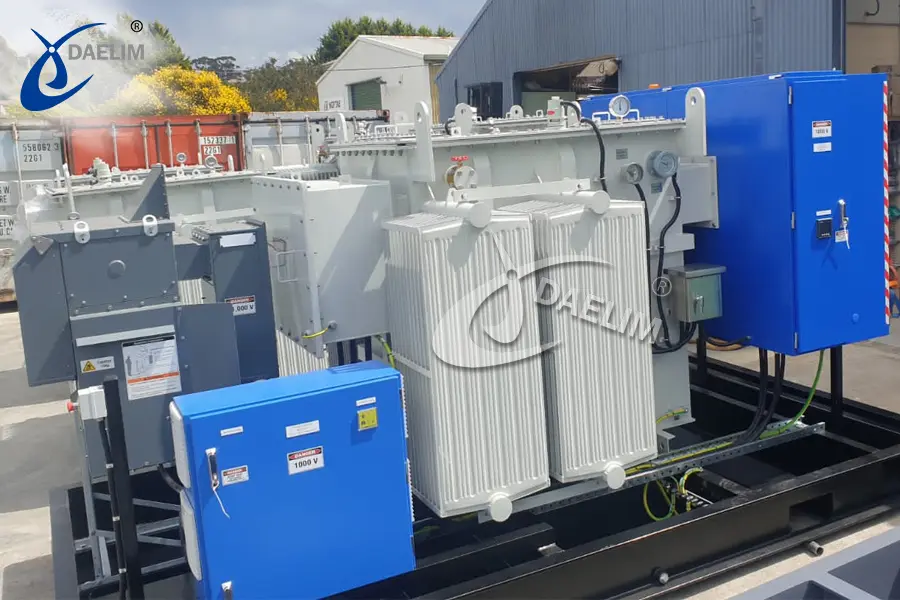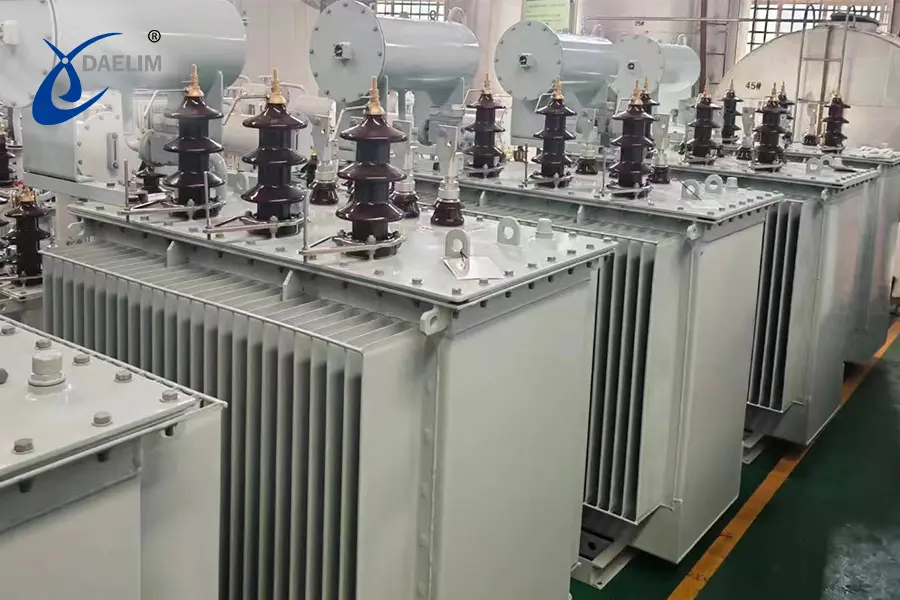1 MVA Transformer: The Ultimate FAQs Guide - Daelim
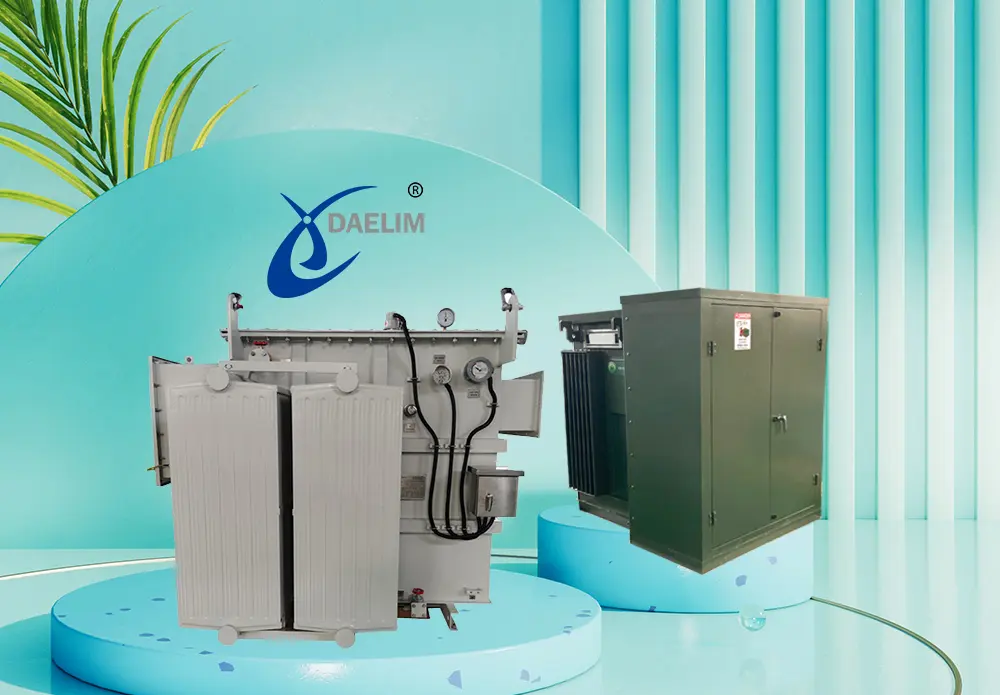
1 MVA transformer unit type has a capacity of 1,000 KVA power. Moreover, 1 MVA transformer specification and applications can be highly put to use on industrial sites, manufacturing facilities, and commercial.
The Daelim 1 MVA transformer is available in two main types that suit different usage situations on both the primary and secondary sides. This guide will answer frequently asked questions about 1 MVA transformers, their unique features, and applications.
Contact Daelim TransformerWhat is a 1MVA Transformer?
A 1 MVA transformer is a type of transformer that offers 1,000 KVA of power. It does this by converting one alternating current (AC) into another using the same voltage. However, it does this while using 180 degrees out of phase.
1 MVA transformers are used in various applications where there is a need to transfer electrical energy between the generator and the primary circuits of distribution.
There are two (2) types of 1 MVA transformers: dry-type transformers and oil-filled transformers. Dry-type 1 MVA transformers are typically used indoors, while oil-filled 1 MVA transformers are used outdoors due to their better cooling properties.
Read more: 1000 kVA Pad Mounted Transformer
What’s the 1 MVA Transformer Price?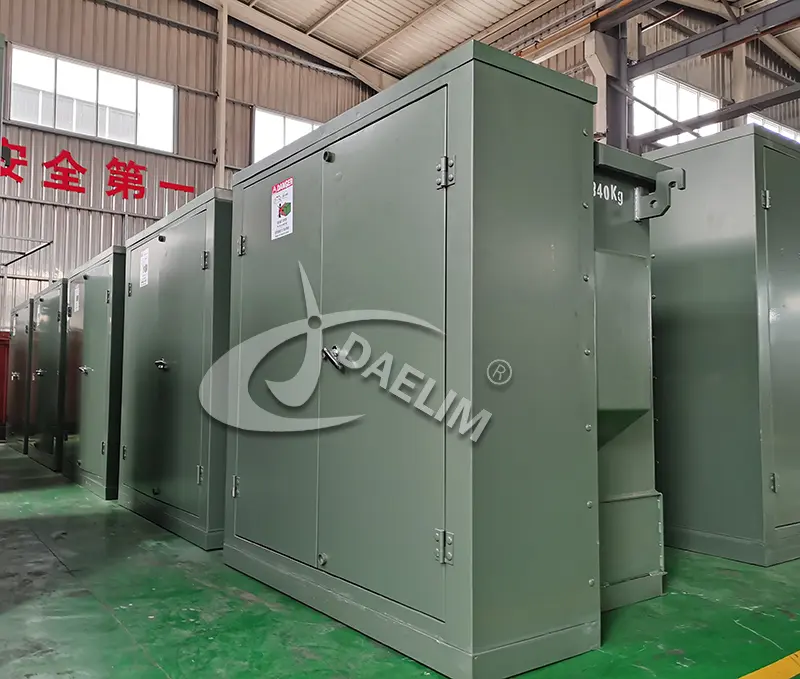
The 1 MVA transformer or 1000 KVA transformer price depends on certain factors such as the type of 1 MVA transformer, the manufacturer, the features, and the level of customization.
For example, a 1 MVA 3-phase dry-type distribution transformer can cost between $12,800 to $18,410. Meanwhile, a 1 MVA 3-phase oil-filled distribution transformer can cost between $8,800 to $22,600.
For 1MVA transformers, the prices of different types, design and production standards, technical requirements, materials, and accessories requirements vary greatly, so it needs to be determined according to the specific technical parameters and design requirements of the transformer.
To determine a 1 MVA transformer cost budget, it's best to consult a professional who can help you choose the right 1 MVA transformer for your specific application. You can also request quotes from different 1 MVA transformer manufacturers like Daelim. In addition, Daelim offers a free quotation on a 1 MVA transformer model, so don't hesitate to request one.
Get it now: Do you want to learn more about a 34.5 kV transformer?
How Big is A 1000 kVA transformer?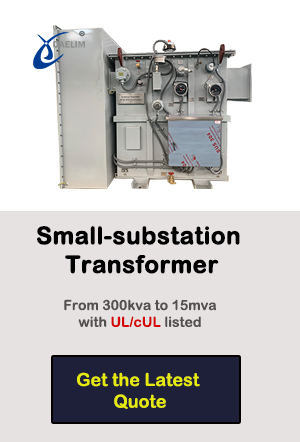
A 1000 KVA transformer is a 1 MVA transformer in size and weight. 1 MVA transformers typically weigh between 6172 to 7716 pounds (2,800 to 3500 kilograms) and have dimensions of W x D x H =5 in. x 64in. x 68 in.
Other 1 MVA transformer variants may have slightly different dimensions due to the type of 1 MVA transformer. For example, 1 MVA pad-mounted transformers are typically smaller with dimensions of W x D x H = 89 in. x 59 in. x 64 in.
Maybe enjoy: Electrical Power Transformer Basic Guide
How Do I Choose a Transformer Size?
The right transformer size for your application depends on various factors, such as the amount of power you need to transfer, the type of transformer, the application, and the environment. For example, a 1 MVA dry-type transformer is typically used in indoor applications, while a 1 MVA oil-filled transformer is used in outdoor applications.
Determining the transformer's kVA will require you to calculate the load current. You’ll get the value you’re looking for after multiplying it by the voltage. For example, if you have a 1,000-volt (V) load with a current of 1,000 amperes (A), you will need a 1 MVA transformer. To determine the maximum transformer current, divide the 1 MVA transformer rating by the secondary voltage. In this example, 1,000 ÷ 1,000 = 1 ampere.
By following this formula, you can determine the right transformer size you need for your specific application without overloading or damaging the transformer.
As for the high and low voltage of the transformer, it needs to be determined according to the power grid you want to connect to. Usually, the transformer of the same capacity, the higher the voltage, the larger the size.
Reading more about Transformer Size
How Much Does a 1MVA Transformer Weight?
The weight of a 1 MVA transformer varies depending on its type. For example, 1 MVA dry-type transformers typically weigh between 6,600 lbs (3,000 kg) and 4,000 lbs (1,814 kg). In contrast, a 1 MVA oil-filled transformer can weigh up to 7,275 lbs (3,300 kg).
The size and weight of a 1 MVA transformer also depend on the manufacturer. For instance, a 1 MVA transformer from Daelim generally weighs around 7,054 lbs (3,200 kg). Other factors that influence the weight include the type of cooling system, insulation, winding material, and tap changer.
When selecting the appropriate 1 MVA transformer, it's important to consider these factors and consult with a transformer expert. This will help ensure that you choose a transformer that is ideally suited to your specific application.
Reading more: 1000kVA Power Transformer
How Many Types of 1 MVA Transformer Are There?
1 MVA transformers are classified into two distinct types: dry-type and oil-filled 1 MVA transformers. Dry-type transformers are filled with air while oil-filled 1 MVA transformers are, as the name suggests, filled with oil.
Dry-Type Transformers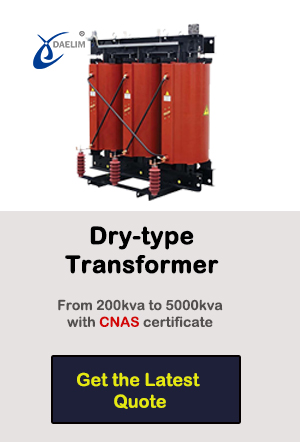
Dry-type transformers feature a gaseous insulation system that uses either air or nitrogen. These transformers are hermetically sealed, which means they’re designed to prevent the entry of any external contaminants.
Dry-type 1 MVA transformers are typically used in indoor applications where there’s little to no risk of oil leakage. They’re also more fire-resistant than oil-filled transformers since there's no transformer oil that can ignite in the event of a fire. However, dry-type transformers are typically 15% to 25% more expensive than oil-filled 1 MVA transformers.
You may enjoy: Ultimate guide to cast resin dry type transformer
Oil-Filled Transformers
Oil-filled transformers are the direct counterpart to dry-type transformers. These 1 MVA transformers use oil both as an insulation medium and a cooling agent. The oil also helps to dissipate any heat generated by the transformer.
Typically used in outdoor applications where there is a risk of oil leakage, oil-filled transformers are generally less expensive than their dry-type counterparts. However, they are more susceptible to fire hazards, as the transformer oil can potentially ignite in the event of a fire. Despite this, oil-filled transformers offer higher standard energy efficiency and a longer lifespan compared to dry-type transformers.
Daelim provides both dry-type and oil-filled transformers, which are used in industrial, residential, wind, and solar energy projects. Daelim’s substation transformers,pad-mounted transformers and Ecodesign transformer are oil-filled and feature UL/CSA/IEEE CE certification. The company is currently focused on markets in North America, Australia, Europe, and Central and South America.
Keep reading: 1000kVA Tier 2 Oil Filled Distribution Transformer
How Many Amps Is a 1 MVA Transformer Good For?
Determining the amperage a transformer can handle depends on its capacity and voltage.
The rated current of a transformer is calculated by dividing the rated capacity of the winding by the rated voltage and the corresponding coefficient (1 for single-phase, and √3 for three-phase). This rated current represents the current flowing through each winding and is commonly referred to as the line current. For a single-phase transformer forming part of a three-phase group, if the windings are connected in a delta configuration, the rated current of the windings is represented by the line current divided by √3.
The calculation formulas for transformer current are as follows:
- Three-Phase Transformer: Current (A) = Transformer Capacity (kVA) / (Voltage Level (kV) × √3)
- Single-Phase Transformer: Current (A) = Transformer Capacity (kVA) / Voltage Level (kV)
For example, with a transformer capacity of 1 MVA, a high voltage of 13.2 kV, and a low voltage of 0.48 kV:
-
For a single-phase 1 MVA transformer:
I(amps)=1000 kVA13.2 kV≈75.76 ampsI (\text{amps}) = \frac{1000 \text{ kVA}}{13.2 \text{ kV}} \approx 75.76 \text{ amps}I(amps)=13.2 kV1000 kVA≈75.76 amps -
For a three-phase 1 MVA transformer:
I(amps)=1000 kVA13.2 kV×3≈25.0 ampsI (\text{amps}) = \frac{1000 \text{ kVA}}{13.2 \text{ kV} \times \sqrt{3}} \approx 25.0 \text{ amps}I(amps)=13.2 kV×31000 kVA≈25.0 amps
Thus, the current rating for the single-phase 1 MVA transformer is approximately 75.76 amps, while the current rating for the three-phase 1 MVA transformer is approximately 25.0 amps.
1000 kVA Amorphous Core Transformer
1 MVA Transformer Data Sheet
Here we take a 1000kVA pad-mounted transformer as an example to see the specific data, including transformer accessories, weight and size, high and low voltage BIL values, tap changer, transformer material, color, temperature, losses and impedance, and other important information.
How Much Power is 1 MVA?
To determine the amount of power of 1 MVA, you will need to know how to convert KVA (kilo-volt amperes) to KW (kilowatt). You can do so using the following formula:
Real Power = 1 kVA × 0.8 = 0.8 kW, where:
1 kVA is the apparent power, and
0.8 is the power factor.
In this example, 1 kVA is equal to 0.8 kW. Therefore, 1 MVA is equal to 800 kW.
How Does 1 MVA Transformers Work?
Electrical transformers with a power rating of 1 MVA can handle loads of up to 1000 kVA.
This means that the transformer can handle a load of up to 800kw of electrical power at a given voltage level.
In addition to their power capacity, 1 MVA transformers can also be designed to meet specific requirements such as high efficiency, low noise, and compact size.
A 1 MVA transformer might weigh several tons and be several feet in height, width, and length.
They are typically constructed with high-quality materials and designed to operate reliably and efficiently over a long service life.
What Are The Applications of 1 MVA Transformer?
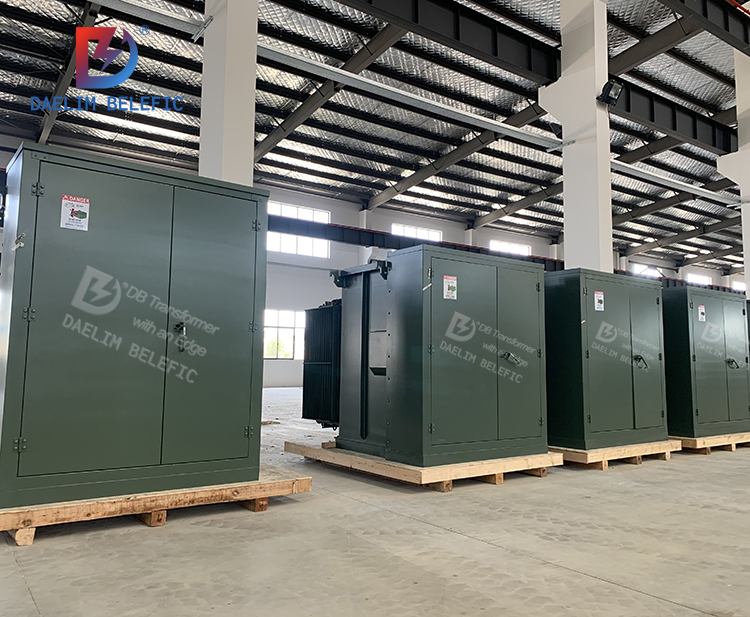
A 1 MVA transformer is commonly used in a variety of applications, including:
Data centers: 1 MVA transformers are often used to supply power to data centers, which require a lot of electrical power to run their servers, cooling systems, and other equipment.
Wind farms: These transformers are commonly used to step up the voltage generated by wind turbines before it is usually transmitted to the power grid.
Photovoltaic power plants: 1 MVA transformer that is typically used in PV power plants are highly designed to operate at high-efficiency levels.
These are all created to withstand the environmental conditions commonly found in outdoor installations, such as high temperatures, humidity, and exposure to dust and debris.
BESS (Battery Energy Storage System): In this method, 1 MVA transformers are often used to connect battery storage systems to the power grid, allowing excess power to be potentially stored and used during periods of high demand.
Construction industry: In the construction industry, 1 MVA transformers are usually used in commercial and residential areas with better economic development and denser population. Such as New York State, Washington State, and Texas State.
Oil and gas exploration: You can also use a 1 MVA transformer to power drilling rigs, pumping stations, and other equipment used in the exploration and production of oil and gas.
Factories: 1 MVA transformers are mainly applied to power machinery and equipment in manufacturing plants, particularly those with high power requirements such as steel mills or chemical plants.
More resource: 1000 kVA Pad Mounted Transformers For Jamaica Market
What Are The Factors Influencing the Price of 1 MVA Transformers?
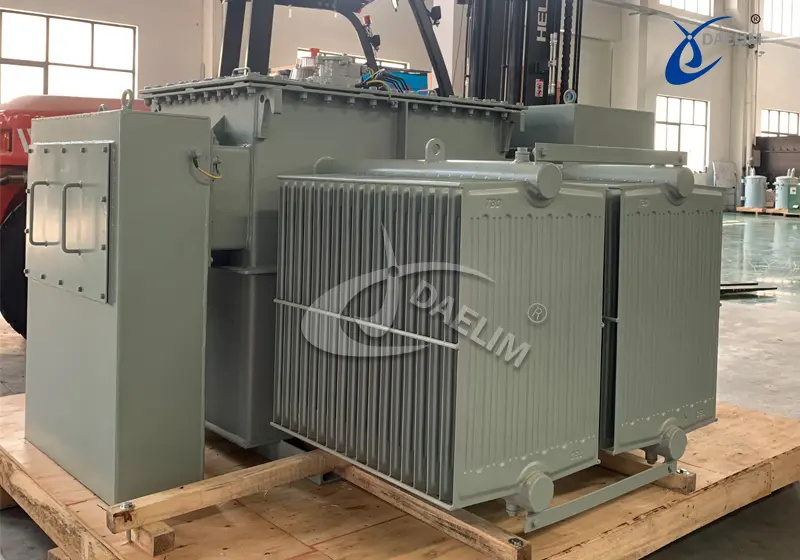 1 MVA transformer price is mainly influenced by various factors, including design and construction considerations and quality and performance requirements.
1 MVA transformer price is mainly influenced by various factors, including design and construction considerations and quality and performance requirements.
As well as that, they are highly affected by market factors and supplier variations, and some additional costs and considerations.
A. Design And Construction Considerations
When considering the price of a 1 MVA transformer, there are several design and construction factors to take into account.
Core Material And Design
The most common core material used in 1 MVA transformers is highly laminated steel, which consists of thin layers of steel sheets insulated from each other.
Then you can see an amorphous metal core, an alloy with a disordered atomic structure.
1 MVA transformer specification is mainly designed to operate at a specific frequency, which is typically either 50 Hz or 60 Hz depending on the location.
Winding Type And Insulation Materials
Some common winding types used in 1 MVA transformers include concentric winding, sandwich winding, and helical winding.
This winding type involves placing the primary and secondary conductors in concentric layers around the core.
1 MVA transformer windings are commonly used in medium and high voltage applications.
1 MVA transformer includes insulation materials like Oil-impregnated paper, Epoxy Resin, and Nomex.
These are all excellent thermal and electrical properties and are often used in high-temperature applications.
Cooling Mechanisms And Efficiency
In a 1 MVA transformer, some of the cooling mechanisms are Natural Air Cooling, Forced Air Cooling, and Forced Oil Cooling.
In most cases, a 1 MVA transformer can be generally cooled by an ONAN system.
The efficiency of a 1 MVA transformer is mainly affected by the losses in the transformer, including core losses, winding losses, and stray losses.
Higher-efficiency transformers have lower losses, which results in less waste heat and lower operating costs.
More resource: The ultimate guide to ONAN transformers
B. Quality And Performance Requirements
Generally, the quality and performance requirements for a 1 MVA transformer are critical to ensure safe and reliable operation.
Standards And Certifications
1 MVA transformer must meet relevant international and national standards, such as the International Electrotechnical Commission (IEC) standards, the American National Standards Institute (ANSI) standards , the Canadian Standards Association (CSA) standards, or the Department of Energy(DOE efficiency ).
Compliance with these standards ensures that the transformer meets minimum safety and performance requirements.
As a result, standard compliance requires additional testing and documentation, which can increase the 1 MVA transformer price.
Voltage Regulation And Losses
1 MVA transformer with better voltage regulation typically requires higher quality materials and components to achieve the desired performance.
For example, transformers with automatic voltage regulation (AVR) or tap-changing capabilities require additional components, such as voltage regulators, which can increase the 1 MVA transformer price.
Higher efficiency transformers like 1 MVA transformers generally have lower losses, which can result in lower operating costs over the transformer's lifetime.
More resource: Losses in Transformer
Short-Circuit Strength And Overload Capacity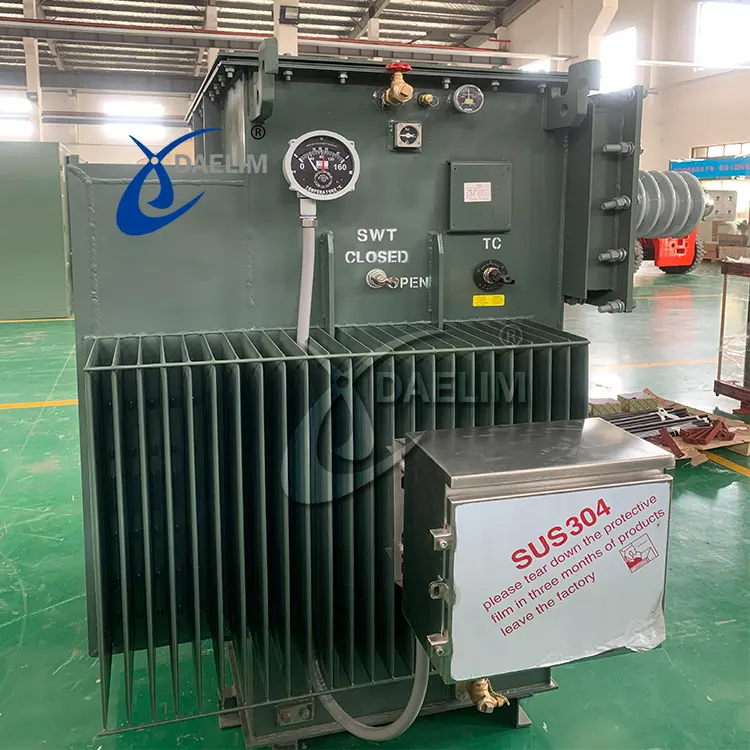
1 MVA transformer with higher short-circuit strength requires additional reinforcement and uses higher-grade materials, which can increase the 1 MVA transformer price.
On the other hand, the additional materials and design considerations required to increase the overload capacity of a 1 MVA transformer can increase the cost of the transformer.
For example, a 1 MVA transformer with larger conductors and more robust insulation materials is typically more expensive than 1 MVA transformer with smaller conductors and less robust insulation.
C. Market Factors And Supplier Variations
Market factors and supplier variations can also impact the 1 MVA transformer price, as well as the 4 MVA transformer price and 3 MVA transformer price.
Supply And Demand Dynamics
If the demand for 1 MVA transformer exceeds the supply, the price of transformers may increase.
Conversely, if the supply of transformers exceeds the demand, the 1 MVA transformer price may decrease.
For instance, following the outbreak of the COVID-19 pandemic in late 2019, the transformer industry faced significant challenges due to labor shortages. This scarcity of workforce resulted in a constrained supply of transformers, leading to upward pressure on their prices.
More resource: 4 MVA Pad Mounted Transformer
Raw Material Costs And Availability
The cost and availability of raw materials, such as copper, steel, and insulation materials, can impact the 1 MVA transformer price.
If the cost of raw materials increases, the cost of manufacturing transformers may also increase, which can result in higher prices for transformers.
Similarly, if the availability of raw materials is highly limited, the cost of obtaining those materials may increase. This may also affect the 1 MVA transformer price.
Competition And Pricing Strategies
If many manufacturers are producing similar 1 MVA transformer specifications, they may compete on price to attract customers.
On the other hand, if there are only a few manufacturers producing transformers with specific features, they may be able to charge a premium of 1 MVA transformer price.
D. Additional Costs And Considerations
In most cases, there will be some additional costs and considerations that can affect the 1 MVA transformer price.
Transportation, Installation, And Maintenance
For example, the cost of transporting and installing a 1 MVA transformer can be significant.
1 MVA transformer may require special equipment, such as cranes or trucks, for transportation and installation.
Therefore, the cost of ongoing maintenance, such as oil changes and insulation testing, should also be highly considered when calculating the total cost of the transformer.
Warranty And After-Sales Support
1 MVA transformer with longer warranties and more comprehensive after-sales support may be more expensive than transformers with shorter warranties and limited after-sales support.
In general, the after-sales support may include technical support, training, and troubleshooting services, which can add value to the total 1 MVA transformer price.
Customization Options And Special Features
Customization options, such as specific cooling mechanisms, insulation materials, or voltage regulation capabilities, may increase the 1 MVA transformer price.
Special features, such as noise reduction measures or remote monitoring capabilities, may also add to the 1 MVA transformer price.
As you can see, several additional costs and considerations can affect the price of a 1 MVA transformer.
Buyers should carefully consider their specific application requirements and consult with manufacturers.
It is best to determine the best options and features for their needs while balancing the cost and performance trade-offs.
1 MVA Transformer Specification
Here are the official specifications of a Daelim 1 MVA transformer:
kVA Rating: 1 MVA
Primary Voltage (HV): 13800v
Secondary Voltage (LV): 220y/127
Type: Loop feed
Installation: Outdoor
Standards: IEEE Std. C57.12.00; C57.12.90; C57.12.34
Model: ZGS-H-1000/ 13800/220y/127
Cooling System: ONAN
Vector Group: Dyn1
Phases: 3
Frequency: 50 Hz
Ambient Temperature: 50°C
Working Temperature:-20°C to +40°C
No Load Losses: 1.15kW
On Load Losses: 10.30kW
Total Losses: 11.45kW
Loss Tolerance Impedance:10% NLL, 6% Total Loss
Impedance: 4%
Tolerance: ±7.5%
Insulation Class (HV): 15kV
BIL (HV): 95kV
Insulation Class (LV): 1.2kV
BIL (LV):30kV
Contact Daelim Transformer now to get more about 1MVA Transformer Specification

If you need a high-quality and reasonable 1MVA transformer, you can always purchase it from Daelim Transformer.
It's vital to locate a dependable power transformer manufacturer such as Daelim. When you purchase from us, you can rest assured that you'll receive top-notch service.
Daelim provides the highest overall value to customers since it considers both one-time and ongoing costs.
We also have 1 MVA pad mounted transformer in stock, contact Daelim Transformer now for information or quotation.
Related Products
Related Article
20mVA Furnace Transformer, Mexico
Installation in 2018, is used to supply power to an electric furnace, which lowers the high voltage to the furnace-required lower voltage. It was designed according to client's request.
13.8 kV 10.5 MVA Substation Transformer for Ecuador
A customer from Ecuador contacted Daelim Transformer for a 10.5MVA substation transformer (13.8kV high voltage, 2.4kV low voltage). Daelim Transformer provided a customized solution, conducted virtual factory tours, ensured rigorous quality control via video inspections, and offered post-delivery online training and ongoing support, fostering a successful partnership.
Pad Mounted Transformer for BESS System 4.0 MVA in Riverside County, California
Today, Daelim Transformer is proud to introduce a pad-mounted transformer for a 4.0 MVA Battery Energy Storage System (BESS) project located in Riverside County, California. The transformer is meticulously crafted to comply with the specifications outlined in the California Electrical Code Article 450.
20MVA Power Transformer for the United States
This project involves the development of a 20 MVA three-phase power transformer tailored for the United States market. The primary voltage is 24.94kV, and the secondary voltage is 4.16kV, indicating it functions as a step-down transformer. The design and production fully comply with IEEE C57.12.00 standards and have passed third-party UL team testing. All accessories also adhere to IEEE standards. FR3 vegetable oil serves as the insulating liquid for the transformers.
2 MVA Pad Mounted Transformer for Utility
Behold the backbone of Canada's utility infrastructure—the 2MVA pad mounted transformer. With a primary voltage of 4160Grdy/2400V and a secondary voltage of 800GrdY/461V, this transformer stands as a testament to efficiency and reliability in power distribution. Crafted in strict accordance with CSA standards and CAN/CSA802.1 energy efficiency guidelines, it embodies the pinnacle of engineering excellence.
Daelim Transformer Custom 1500 kVA Pad Mounted Transformer for Canada
As a professional pad mounted transformer manufacturer & supplier, Daelim Transformer is committed to meeting standards such as ANSI/IEEE, CSA, DOE, and NEMA, offering customized solutions. Here, we present a case of a 1500 kVA pad mounted transformer tailored for the Canadian market.
1000 kVA Pad Mounted Transformers For Jamaica Market
In October 2023, Daelim Transformer successfully manufactured two units of 6 kV 1000 kVA pad mounted transformers, meeting 100% compliance with IEEE C57.12.34 and IEEE 693-2005 standards. These transformers, one step up and the other step down, were tailored for a valued customer in Jamaica. Let's delve into the details of this exceptional project.
1500 kVA Transformer for Australian Mining Project
Introduce the 1500 kVA transformer tailored for Australian mining projects. The transformer operates in a three-phase configuration, with a total of four units deployed. Notably, its primary voltage stands at 11kV, while the secondary voltage is 1kV. Characterized by its compact size, emphasis on safety, and unwavering reliability, this transformer is meticulously designed and manufactured to meet the stringent requirements outlined in AS 60076 and AS efficiency value standards.Let's delve into the key features and specifications of this essential solution.
500 kVA Distribution Transformer for the Greek Market
Today, we're thrilled to showcase a European transformer project tailored for the Greek market. This project involves the supply of 500 kVA distribution transformers, with an input voltage of 20 kV and an output voltage of 400V. The client has requested adherence to both IEC and TIER-II energy efficiency standards. With a total quantity of 5 units, this project marks another milestone in Daelim Transformer's commitment to delivering high-quality solutions worldwide.

